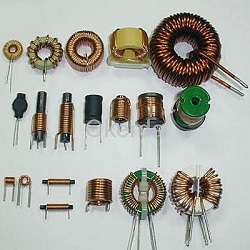![]()
Menu
Tools and Techniques
Basic Overview of Components
 |
Breadboards are useful for connecting and disconnecting components easily for experimentation. Some breadboards connect together into larger breadboards. The average breadboard has power strips on the outer rows which makes it easy to connect power into one location. |
 |
Jumper wires are used to connect points on a breadboard. Keeping a standard pattern with color-coding, such as red wires for positive connections, black for negative connections, green for ground connections, yellow for signal connections and blue for component output. |
 |
Power supplies are designed to provide clean, measurable power throughout a circuit. A power supply can be a battery, a solar cell, but most often to the experimenter, comes from a "bench top" power supply -- that converts wall AC into clean (no spikes) direct current power supply. |
 |
Resistors are used to reduce the voltage between two points in a circuit. Resistance is measured in ohms. Resistors are color coded, so that the first two stripes have a color code to represent the first two numbers, and the third stripe is used for a multiplier. |
 |
Switches are designed to open and close a circuit. Switches are designated by a code, that indicates how many circuits are opened or closed (poles) by the number of positions (thrown) SPST, DPDT, etc. A SPST (single-pole, single-throw) opens or closes one circuit with a single toggle. Double-pole, double-throw often have three positions, one to active one circuit, one to activate another circuit (double poles) and two "on" positions. |
 |
Buttons are switches that are activated to (usually) close a circuit when pressed. |
 |
Photoresistors are components that are resistors coated with a specific compound. As light strikes the compound, the resistance value changes and thus these devices can be used as light sensors. |
 |
Capacitor are designed to store and release electrical charge in a circuit. Typically, a capacitor consists of two charging plates with a material in between that prevents electrical discharge. Capacitors are used to clean and smooth out signals in a circuit. Capacitors come in electrolytic, in which the polarity of the leads *does* matter, and ceramic (or disc) where the polarity is not relevant. Large capacitors can be used as storage systems for current, and as they take a certain amount of time to charge, they become useful timing devices in some basic digital and analog circuits. |
 |
Inductors are used to stores electrical energy in a magnetic field. Basically, the inductor is a just coil of wire. When a current is sent down the wire a magnetic field is generated. When the flow increases, more energy is stored in the magnetic field; when the flow decreases, the energy is released as electrical power. An inductor can be used to smooth or filter out variations in current much like a capacitor. |
 |
Relays are switches that are activated by electrical current. By passing a smaller current into the primary coils of a relay, a magnetically-driven switch on the inside activates the relay and turns it on. Note that many relays can be set upper to use the NC (normally closed) or NO (normally open) configuration based upon which leads are utilized and whether a jumper (a short wire that connects two leads) is utilized. Pay attention to the NC/NO settings, because this can lead to frustration in the least case and overheated or damaged circuits in the worst case. |